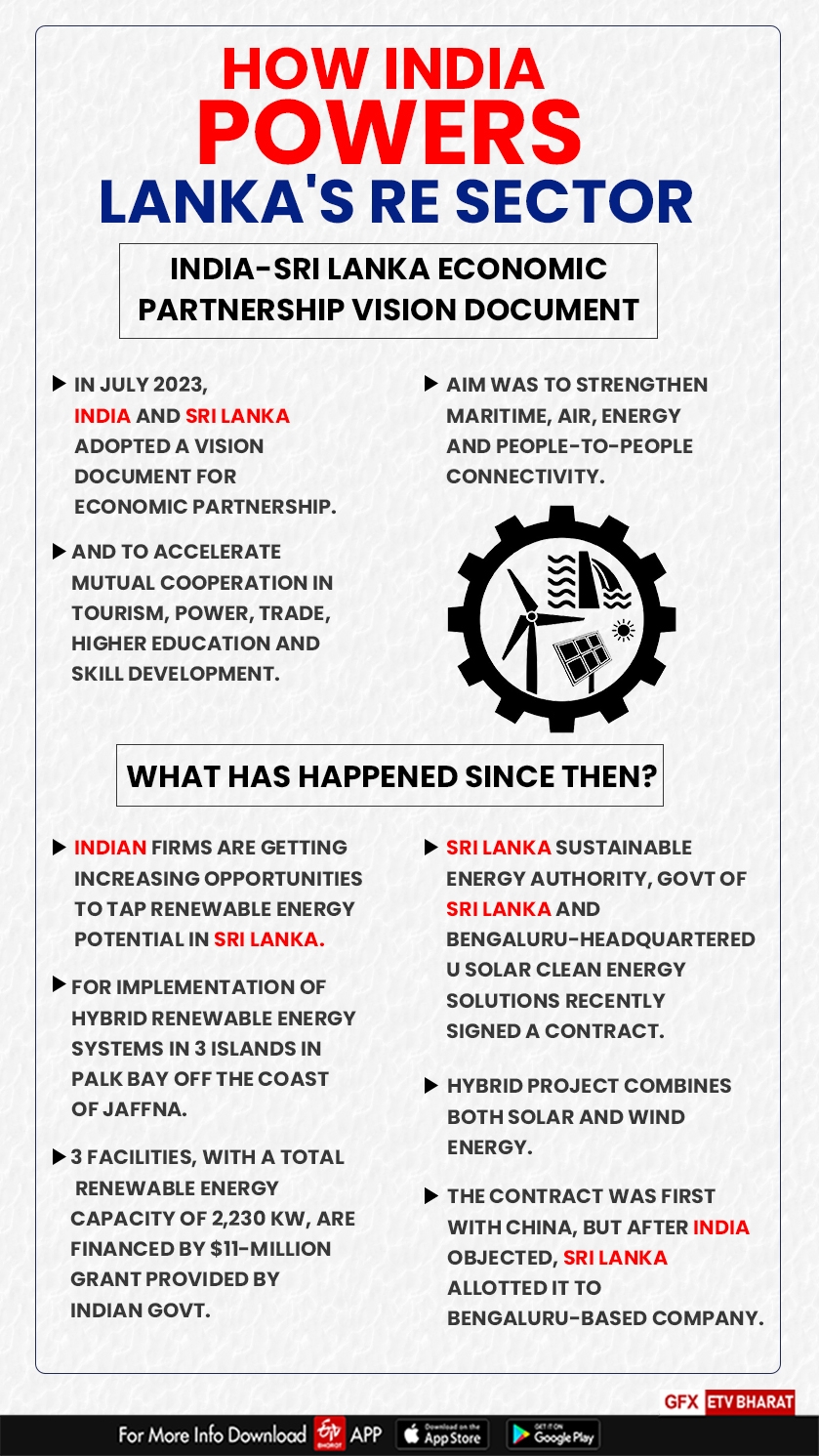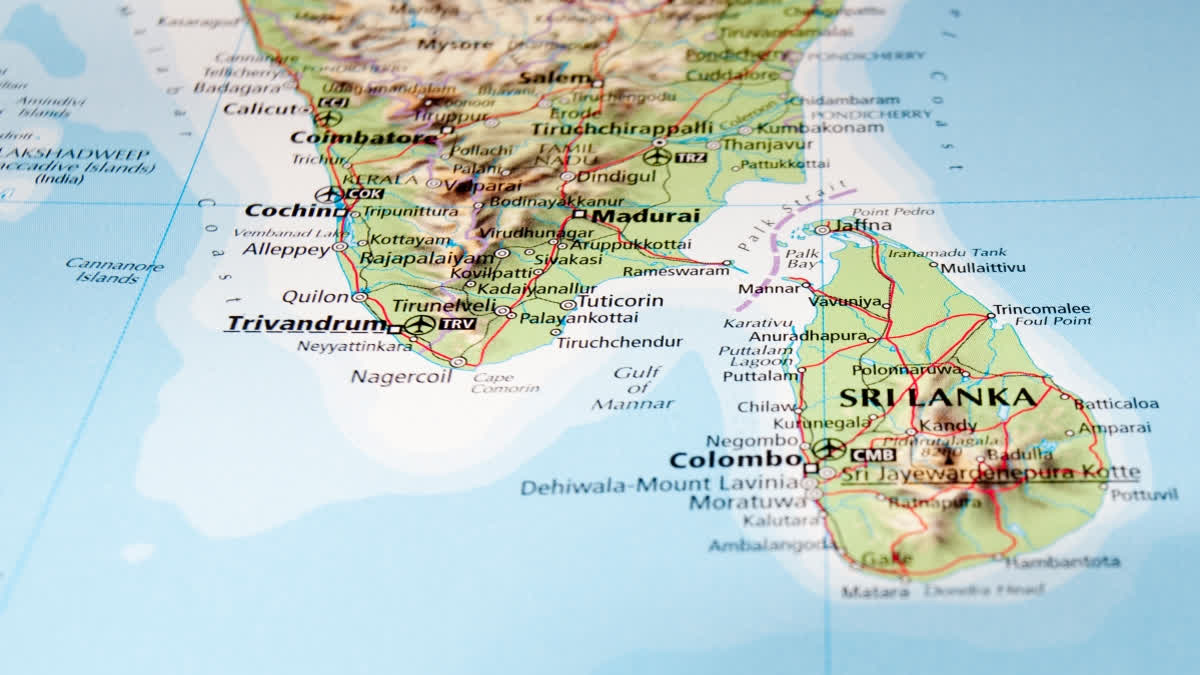New Delhi: In the wake of the India-Sri Lanka Economic Partnership Vision document that was signed during Sri Lankan Prime Minister Ranil Wickremesinghe’s visit to New Delhi in July last year, Indian firms are getting increasing opportunities to tap the renewable energy potential in the Indian Ocean island nation.
In the beginning of this month, Sri Lanka Sustainable Energy Authority, Government of Sri Lanka and Bengaluru-headquartered U Solar Clean Energy Solutions signed a contract for the implementation of Hybrid Renewable Energy Systems in Delft (Neduntheevu), Nainativu and Analaitivu islands in the Palk Bay off the coast of Jaffna.
According to a statement issued by the Indian High Commission in Colombo, the project, which is aimed at addressing energy needs of the people of the three islands, is being executed through grant assistance from Government of India (GoI). The hybrid project combines various forms of energy including both solar and wind, towards optimising capacities.
“GoI’s assistance to the project for the people of the three islands, which are not connected to the national grid, underscores the significance attached by GoI to bilateral energy partnership as well as the human-centric nature of development partnership,” the High Commission statement read.

The three facilities, with a total renewable energy capacity of 2,230 KW, will receive financing from an $11-million grant provided by the Indian government.
It is worth mentioning here that the contract for all the three facilities was originally awarded to the Chinese firm Sinosoar in January 2021 after a bidding process following guidelines issued by the Asian Development Bank (ADB), which was supposed to extend a loan for this. However, New Delhi raised security concerns as these facilities lie just 50 km off the southern coast. As a result, the Sri Lankan government took away these projects from the Chinese firm and allotted these to India’s U Solar Clean Energy Solutions.
According to Anand Kumar, Associate Fellow at the Manohar Parrikar Institute of Defence Studies and Analyses, India is helping Sri Lanka which is facing a dire economic crisis.
“In the process, it is also trying to get back its geopolitical influence in Sri Lanka,” Kumar told ETV Bharat.
He explained that earlier Sri Lanka said that it was going to China as India and the US were not taking interest in developing renewable energy projects.
“However, their relationship with China intensified to such a level that it started raising concerns,” he said and cited the Hambantota port which Sri Lanka had to lease out to China as an example.
Earlier this week, the inaugural India-Sri Lanka Joint Working Group meeting for cooperation in renewable energy was held in Colombo. The Indian delegation comprised officials from the Ministry of New and Renewable Energy, Central Electricity Authority of India and the High Commission of India in Colombo. A 17-member delegation from the Confederation of Indian Industries (CII) representing major renewable energy companies in India also accompanied the official delegation. The Sri Lankan delegation had members from the Ministry of Power and Energy, Ceylon Electricity Board (CEB) and Ministry of Foreign Affairs.
“During the meeting, the Indian delegation gave detailed presentation on India’s achievements in the renewable energy sector, citizen-centric schemes offered by the Government of India to encourage investments in the renewable energy sector, the National Green Hydrogen Mission and India’s cross-border electricity trade,” an Indian High Commission statement issued after the meeting read. “The Sri Lankan side highlighted the present status of the power sector in Sri Lanka and the contribution of renewables in the energy mix.”
According to the statement, Sulakshana Jayawardena, Secretary of Sri Lanka’s Ministry of Power and Energy, said that since the Government of Sri Lanka was working towards achieving an ambitious target of 70 percent generation through renewable energy by 2030, there existed vast potential for investments by Indian companies.
“The Indian side agreed to extend all possible technical assistance to the Government of Sri Lanka in the areas of solar, wind, biomass and grid connection by offering trainings in premier Indian institutions such as National Institute of Solar Energy, National Institute of Wind Energy and National Institute of Bio Energy,” the High Commission statement read.
Meanwhile, way back in 2022, Sri Lanka granted approval to India’s Adani Green Energy for two wind energy projects of 286 MW and 234 MW for an investment of over $500 million to be constructed in northwest Mannar and Pooneryn. The project in Mannar will operate at a total capacity of 250 MW and the project in Pooneryn will operate at a capacity of 100 MW and both will be commissioned by December 2024, according to reports.
It is worth mentioning here that the projects were granted to the Adani Group even before the India-Sri Lanka Economic Partnership Vision document was released during Prime Minister Wickremesinghe’s visit to New Delhi in July last year.
Cooperation in the renewable energy sector has been mentioned as a priority in the Vision document.
“…Conclusion of MoU (memorandum of understanding) on cooperation in developing renewable energy would develop Sri Lanka’s significant renewable energy potential, including offshore wind and solar, thus enabling Sri Lanka achieve its target of generating 70 percent of power requirements from renewable energy sources by 2030,” it states.
The Vision document also mentioned that implementation of the understanding reached on Sampur Solar Power Project would be expedited. In March 2022, India’s National Thermal Power Corporation (NTPC) and Sri Lanka’s Ceylon Electricity Board (CEB) had signed an agreement to jointly develop the 135 MW Sampur Solar Power Project in Sri Lanka’s eastern Trincomalee district.
“The world is fast transitioning from fossil fuel to renewable energy,” Kumar said. “Sri Lanka being a tropical country gets sunshine all year round. So, it is not surprising that they are opting for renewable energy. Also, during the economic crisis, they could not pay for fossil fuel imports due to shortage of dollars.”
Read More



